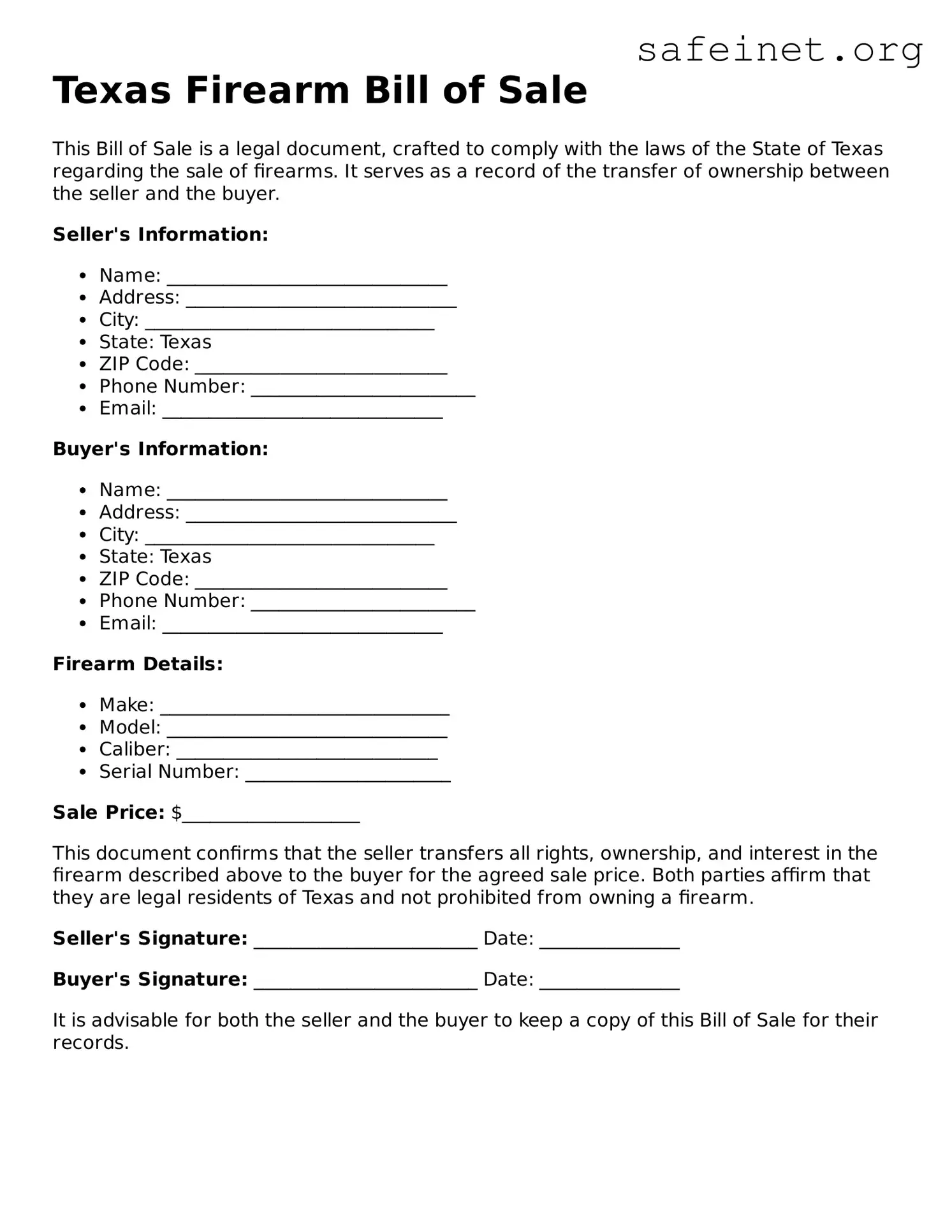What is a Firearm Bill of Sale in Texas?
A Firearm Bill of Sale is a legal document that records the sale or transfer of a firearm between two parties. In Texas, it serves as proof of ownership for the buyer and demonstrates that the firearm was legally transferred by the seller. This document outlines key details, including the make, model, and serial number of the firearm, as well as the identities of both the buyer and seller. Keeping this document can protect both parties in case of future legal disputes regarding ownership.
Is the Firearm Bill of Sale required in Texas?
While Texas law does not mandate a Bill of Sale for private firearm transactions, it is highly recommended. Having this document provides a clear record of the transaction and protects the interests of both parties. It can help prevent legal complications, especially if the firearm is used in a crime after the sale. Additionally, some individuals may choose to create a Bill of Sale to comply with personal or state regulations that require proof of purchase.
What information should be included in the Firearm Bill of Sale?
Essential information includes the names and addresses of both the buyer and seller, descriptions of the firearm (including make, model, caliber, and serial number), and the sale price. It is also prudent to include the date of the transaction. Both parties should sign and date the document to ensure its legality. An affirmation that both parties are legally allowed to buy and sell firearms in Texas might also be included.
Do I need to have the Firearm Bill of Sale notarized?
Notarization of the Firearm Bill of Sale is not necessary in Texas. However, having the document notarized can add an extra layer of validity and provide further assurance to both parties. It serves as an official acknowledgment that the signatures on the document are legitimate and that the transaction took place as described.
Can I use a generic Bill of Sale template for firearms?
Using a generic Bill of Sale template is possible, but it is essential to tailor it specifically for firearm transactions. Ensure that the template includes all required information relevant to firearms sales, including specific details (such as the firearm's serial number). Customizing the template will help prevent confusion and ensure compliance with Texas law.
What happens if I lose the Firearm Bill of Sale?
If the Bill of Sale is lost, it may pose challenges in proving ownership should any legal issues arise. Buyers and sellers should make multiple copies of the document at the time of the transaction. If a Bill of Sale is lost, the best course of action might be to create a new document. The new document should include a statement affirming the original sale and indicate that this is a replacement for the lost Bill of Sale.
Is there a waiting period for firearm transfers in Texas?
Texas does not impose a waiting period for private firearm transfers. Once the transaction is agreed upon and the Bill of Sale is completed, the buyer may take immediate possession of the firearm. However, both parties should ensure that the buyer is legally eligible to own a firearm under both federal and state laws.
Are there any age restrictions on buying firearms in Texas?
Yes, age restrictions apply. To purchase a handgun in Texas, an individual must be at least 21 years old. For rifles and shotguns, the minimum age is 18. Sellers should verify the buyer's age and eligibility to comply with laws and regulations to prevent unlawful sales.
